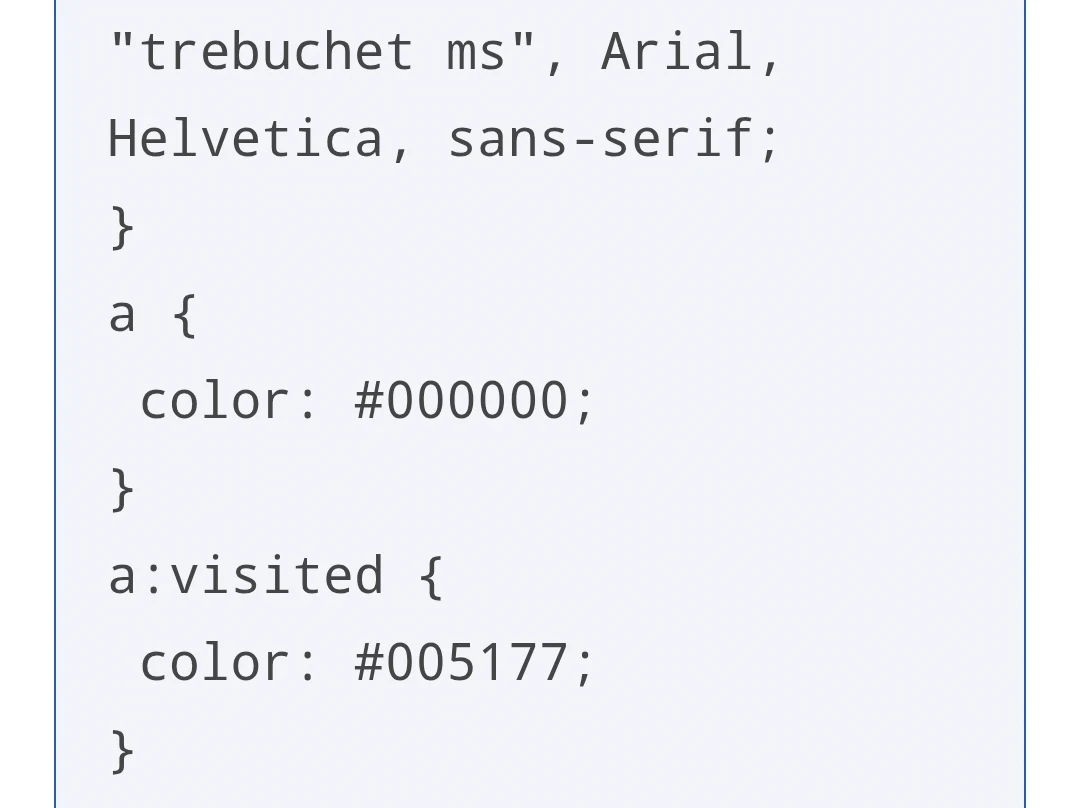What is CSS a markup language?
Cascading Style Sheets, CSS describes reusable styles for presenting documents written in a markup language. Its concept was originated by Håkon Wium Lie in 1994. In December 1996, CSS was made a specification by the W3C, and today allows web developers to alter the layout and appearance of their web pages. For example, CSS can change the font used in certain HTML elements and their size and color. A single CSS file may be linked to multiple pages, allowing a developer to change the appearance of all the pages at the same time. The following box contains an example of using CSS code to define fonts, the color of hyperlinks, and the color of a link when the mouse cursor hovers over. In this specific example, we are only changing the HTML (HyperText Markup Language) tags and , rather than creating any new class or id selectors.
Type="text/css" href="URL or path to css file here">
If you named the CSS file example.css, and it's in the same directory as the HTML file it's being loaded from, the following line would link the CSS file.
<link rel="stylesheet" Type="text/css" href="example.css">
CSS3 is the version of CSS (Cascading Style Sheets) that replaces CSS2. It introduces new selectors and properties that allow for more flexibility with page layout and presentation. Some updates, such as the box-shadow property (which allows an element drop shadow), allow visual effects to be applied without creating special images.
Is CSS a markup language?
No. CSS is a style sheet language that gives appearance changes to a markup language. For example, HTML creates the basic layout of a web page, such as this paragraph of text. CSS defines the font, font size, font weight, position, and other visual settings.
